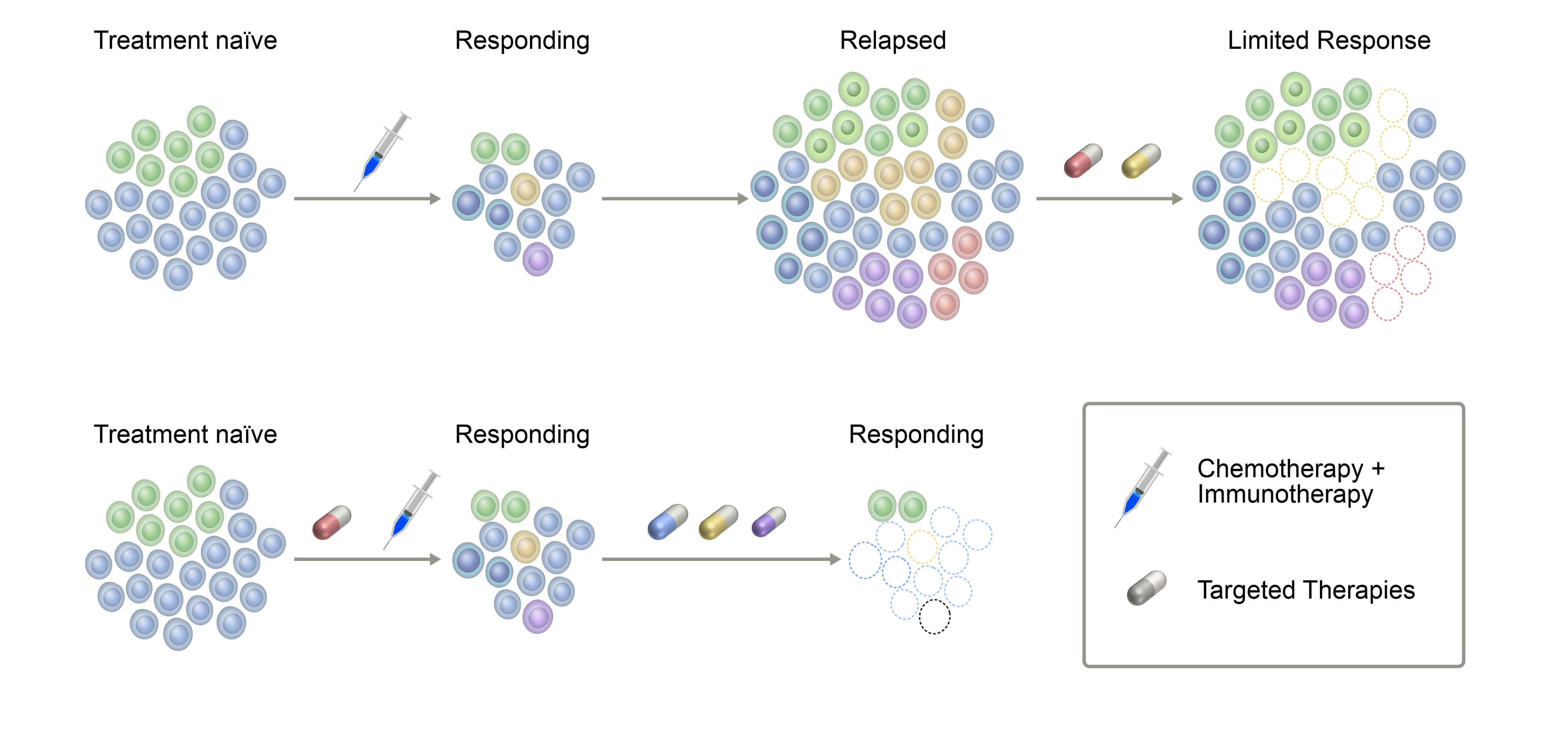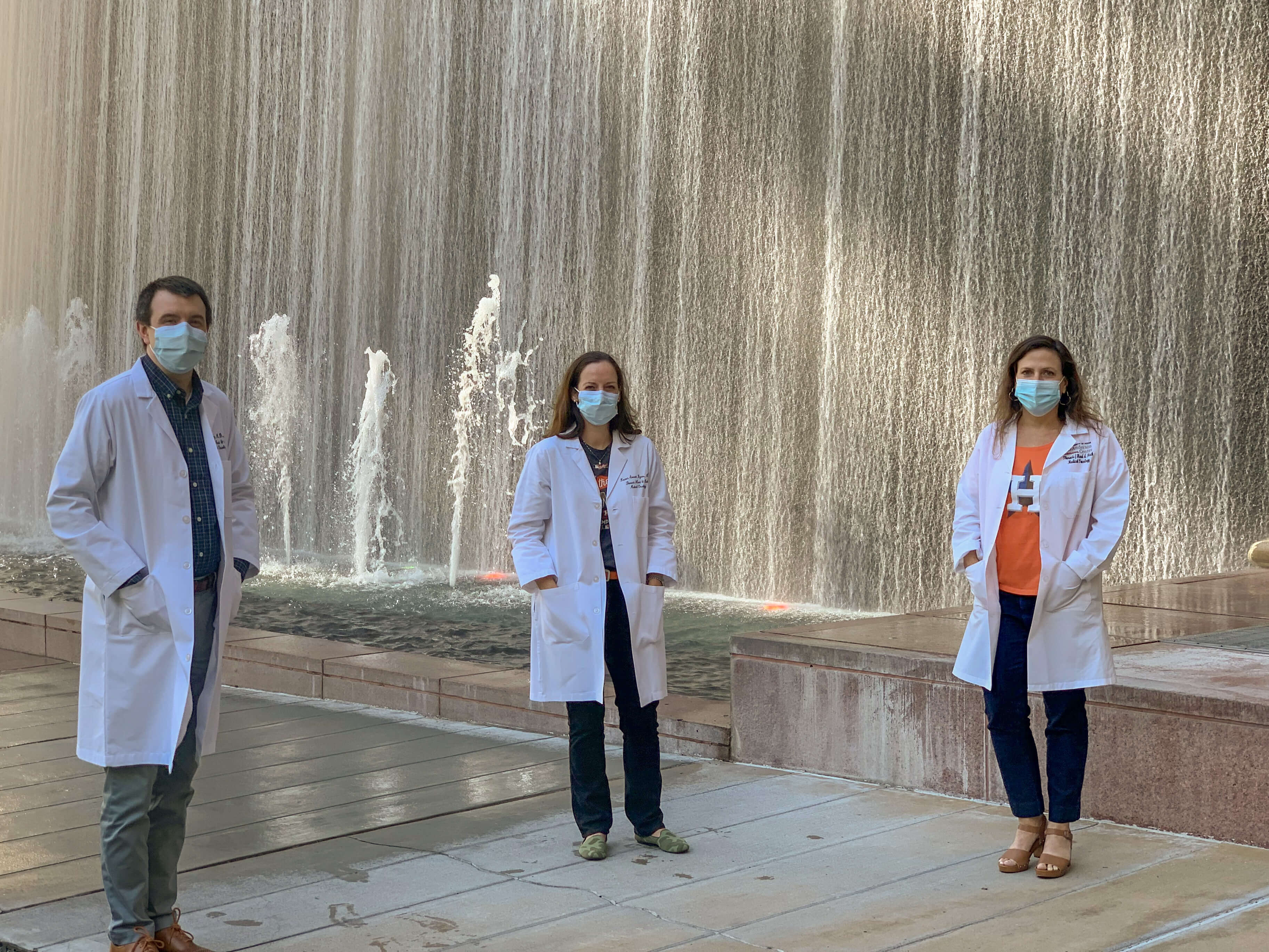Lung Cancer



Posted November 19, 2021
Lauren A. Byers, M.D., The University of Texas MD Anderson Cancer Center

Lauren A. Byers, M.D.,
The University of Texas
MD Anderson Cancer Center
Small cell lung cancer (SCLC) accounts for approximately 13% of lung cancer diagnoses, but is a generally more aggressive tumor than its non-small cell lung cancer counterpart. SCLC is frequently diagnosed as extensive or late-stage disease, with poor prognosis and a 5-year survival rate for patients at a disappointing 7%. Despite being a molecularly heterogeneous disease, SCLC is commonly treated as a single tumor type with platinum-based chemotherapy, as well as radiation, depending on the disease stage. Unfortunately, these tumors typically develop insensitivity to chemotherapy rapidly, leading to disease progression and poor patient outcomes. With funding from a Fiscal Year 2017 Lung Cancer Research Program Idea Development Award-Established Investigator, Dr. Lauren Byers sought to better understand the interplay between chemoresistance and the biological heterogeneity of SCLC. Her efforts have proven remarkably insightful, defining four unique subtypes of SCLC, each with therapeutic vulnerabilities, as well as providing evidence that tumors transition to alternate subtypes following chemotherapy. These advances in understanding have the potential to provide a breakthrough pathway for targeted therapies for SCLC patients based on careful monitoring of the subtypes.
Dr. Byers, together with Drs. Carl Gay (Assistant Professor) and Allison Stewart (Principal Research Scientist) in the Department of Thoracic/Head and Neck Medical Oncology, led a multidisciplinary team to profile patient-derived models of chemosensitive and chemoresistant SCLC tumors, as well as patients' circulating tumor cells over the course of chemotherapy. As reported in their 2020 Nature Cancer publication, a detailed molecular analysis of these cells revealed an increase in the heterogeneity of gene expression from individual tumors following the onset of chemoresistance.1 These observations indicate that SCLC tumors develop multiple clusters of resistant cells during chemotherapy, each with a distinct resistance mechanism. The resulting recurrent tumor is then endowed with multiple means to escape second-line therapies.

Figure 1: SCLC tumors become more heterogeneous following treatment, contributing to drug resistance. Combinations of targeted or immune therapies or strategies to block the mechanisms through which these cancers evolve could improve outcomes for patients. (Figure adapted from https://cancercommunity.nature.com/posts/59618-resistance-contains-multitudes-increasing-transcriptional-diversity-following-sclc-treatment.)
More recently, Dr. Byers’ group undertook an effort to classify the heterogeneity of SCLC to potentially identify unique therapeutic vulnerabilities in molecularly distinct subgroups. As described in their 2021 Cancer Cell publication, the team performed an analysis of gene expression data from 81 different SCLC tumors and determined that the heterogeneity of the disease could be categorized by four major subtypes: SCLC-A, SCLC-N, SCLC-P, and SCLC-I, which are defined by high expression of the transcription factors ASCL1, NEUROD1, POU2F3 or an absence of all three in conjunction with an inflammatory signature, respectively.2
 Figure 2: Byers Lab Team (Left to right: Carl Gay, Lauren Byers, Allison Stewart)
Figure 2: Byers Lab Team (Left to right: Carl Gay, Lauren Byers, Allison Stewart)
Using patient data from a recent clinical trial, Dr. Byers’ team determined that SCLC-I tumors are more responsive to the combination of chemotherapy and immune checkpoint blockade than the others. Further, by modeling the other subtypes in the laboratory, each appeared to respond preferentially to therapies that seem to target their unique vulnerabilities. SCLC-P tumors respond most significantly to the standard of care, platinum chemotherapy, but also respond well to inhibitors of PARP. SCLC-N tumors demonstrate the best response to inhibition of Aurora kinase, owing to their high expression of the oncogene c-MYC, and SCLC-A models respond to inhibitors of BCL2, which is highly expressed in these tumors. The group also found a range of heterogeneity among the subtypes within patient tumors, from those that are predominantly composed of one subtype with small islands of the others to a truly heterogeneous tumor composed of distinct areas of subtype-specific clusters, though this was a less frequent occurrence.
Most intriguingly, the team found that tumors that were resistant to platinum therapy in the clinic demonstrated an increase in the SCLC-I subtype, suggesting that possible shifts toward this subtype from within a more heterogeneous initial tumor may underlie some level of platinum resistance. Indeed, when cell-based tumor models of the SCLC-A dominant subtype were treated with platinum therapy, clusters of cells emerged that were negative for ASCL1, NEUROD1, POU2F3, and expressed inflammatory genes, consistent with the SCLC-I subtype and indicative of “subtype switching.” Importantly, the SCLC-I cells that arise from the SCLC-A initial population were shown to have stem cell-like features, suggesting that even small populations of such cells could potentially drive a recurrent and platinum-resistant tumor.
Taken together, these insights into the understanding of SCLC heterogeneity mark a potentially very important development in more effectively diagnosing and treating patients based on careful subtype analysis. Additionally, these discoveries open the door to advancing specific new therapies for each subtype and designing strategic co-treatments both initially and through the lifetime of patients with SCLC if/when the tumors undergo a subtype-switching event and develop a treatment-resistant phenotype.
Photo credit: MD Anderson Cancer Center.
Publications:
1Stewart CA, Gay CM, Xi Y, et al. 2020. Single-cell analyses reveal increased intratumoral heterogeneity after the onset of therapy resistance in small-cell lung cancer. Nature Cancer. Apr;1:423-436.https://doi.org/10.1038/s43018-019-0020-z.
2Gay CM, Stewart CA, Park EM, et al. 2021. Patterns of transcription factor programs and immune pathway activation define four major subtypes of SCLC with distinct therapeutic vulnerabilities. Cancer Cell. 39:346-360. https://doi.org/10.1016/j.ccell.2020.12.014.
Linkcdmrp.health.mil>
Last updated Friday, March 7, 2025














